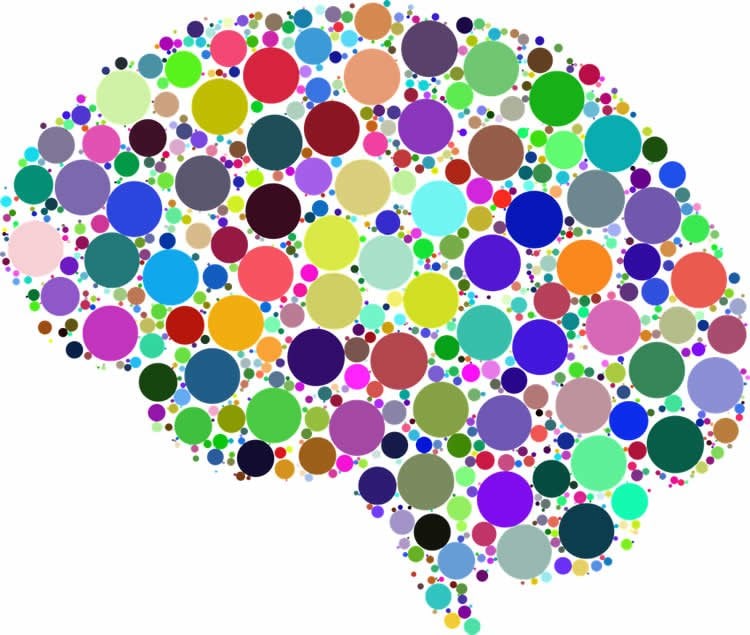Summary: A new study reveals neurodegenerative diseases may speed up the aging process.
Source: NIH/NINDS.
To understand the link between aging and neurodegenerative disorders such as Alzheimer’s disease, NIH scientists compared the genetic clocks that tick during the lives of normal and mutant flies. They found that altering the activity of a gene called Cdk5 appeared to make the clocks run faster than normal, and the flies older than their chronological age. This caused the flies to have problems walking or flying later in life, to show signs of neurodegeneration, and to die earlier.
“We tried to untangle the large role aging appears to play in some of the most devastating neurological disorders,” said Edward Giniger, Ph.D., senior investigator at the NIH’s National Institute of Neurological Disorders and Stroke and the senior author of the study published in Disease Models & Mechanisms. “Our results suggest that neurodegenerative disorders may accelerate the aging process.”
On average, the normal flies in this study lived for 47 days. To create a genetic clock, Dr. Giniger’s team measured the levels of every gene encoded in messenger RNA molecules from cells from the heads and bodies of flies at 3, 10, 30, and 45 days after birth. This allowed the researchers to use advanced analysis techniques to search for the genes that seemed to be sensitive to aging, and create a standard curve, or timeline, that described the way they changed.
When they performed the same experiments on 10-day-old mutant flies and compared the results with the standard curve, they found that the flies were “older” than their chronological age. Altering Cdk5 activity made the brains of the flies appear genetically to be about 15 days old and their bodies to be about 20 days old.
Preclinical studies suggest that Cdk5 is a gene that is important for the normal wiring of the brain during early development and may be involved in some neurodegenerative disorders, including ALS, Parkinson’s and Alzheimer’s disease. In this study, Dr. Giniger’s team found that eliminating or increasing Cdk5 activity beyond normal levels shortened the lives of the flies to about 30 days. After 10 days of age, the manipulations reduced the distance flies could climb up tubes and the alterations caused older flies to have signs of neurodegeneration, including higher than normal levels of brain cell death and degradation.

More analysis showed that altering Cdk5 activity changed the level of several groups of genes that were also affected by aging, including those that control immunity, energy, and antioxidant activity.
To explore this idea further, the researchers tested the strength of the flies’ antioxidant defenses against toxic versions of several chemicals found in cells called oxygen free radicals. Initial experiments showed that aging reduced these defenses in normal flies. Three-day-old healthy flies lived for about 100 hours after exposure to free radicals, and that time decreased with age. In contrast, the defenses of Cdk5 mutant flies were even weaker as they died sooner than the control flies at all ages.
“Our results suggest that aging may not just predispose an individual to degeneration, as we thought. Acceleration of aging may actually be part of the mechanism by which degenerative disease disrupts the structure and function of the brain,” said Dr. Giniger. “We hope that our approach will help researchers untangle the mysteries behind several neurodegenerative disorders.”
His team plans to continue investigating the role of aging in the process of neurodegeneration.
Funding: This study was supported by the Intramural Research Program at the NINDS (NS003106).
Source: Christopher G. Thomas – NIH/NINDS
Publisher: Organized by NeuroscienceNews.com.
Image Source: NeuroscienceNews.com image is in the public domain.
Original Research: Open access research in Disease Models & Mechanisms.
doi:10.1242/dmm.031161
[cbtabs][cbtab title=”MLA”]NIH/NINDS “In Search For the Clocks Behind Aging Brain Disorders.” NeuroscienceNews. NeuroscienceNews, 14 March 2018.
<https://neurosciencenews.com/brain-aging-disorders-8630/>.[/cbtab][cbtab title=”APA”]NIH/NINDS (2018, March 14). In Search For the Clocks Behind Aging Brain Disorders. NeuroscienceNews. Retrieved March 14, 2018 from https://neurosciencenews.com/brain-aging-disorders-8630/[/cbtab][cbtab title=”Chicago”]NIH/NINDS “In Search For the Clocks Behind Aging Brain Disorders.” https://neurosciencenews.com/brain-aging-disorders-8630/ (accessed March 14, 2018).[/cbtab][/cbtabs]
Abstract
Altered expression of the Cdk5 activator-like protein, Cdk5α, causes neurodegeneration, in part by accelerating the rate of aging
Aging is the greatest risk factor for neurodegeneration, but the connection between the two processes remains opaque. This is in part for want of a rigorous way to define physiological age, as opposed to chronological age. Here, we develop a comprehensive metric for physiological age in Drosophila, based on genome-wide expression profiling. We applied this metric to a model of adult-onset neurodegeneration, increased or decreased expression of the activating subunit of the Cdk5 protein kinase, encoded by the gene Cdk5α, the ortholog of mammalian p35. Cdk5α-mediated degeneration was associated with a 27-150% acceleration of the intrinsic rate of aging, depending on the tissue and genetic manipulation. Gene ontology analysis and direct experimental tests revealed that affected age-associated processes included numerous core phenotypes of neurodegeneration, including enhanced oxidative stress and impaired proteostasis. Taken together, our results suggest that Cdk5α-mediated neurodegeneration results from accelerated aging, in combination with cell-autonomous neuronal insults. These data fundamentally recast our picture of the relationship between neurodegeneration and its most prominent risk factor, natural aging.






